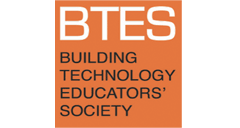Soft Rock Studio: Exploring a “Soft Systems” Approach to “Artificial Rock”
Author ORCID Identifier
DOI
https://doi.org/10.7275/ywvj-eg28
Abstract
This paper discusses a study aimed at shifting disciplinary norms in construction materials. The study, conducted in a graduate level design-build studio, approached precast concrete construction through the lens of “artificial rock”: a composite material that can use cement, sand, aggregate, and reinforcing supplements and alternatives like flax, calcium carbonate, pyrolyzed biomass, soil, alginates, gelatin, and bacteria. Taught as “The Soft Rock Studio”, the course positioned artificial rock within the larger conceptual framework of “soft systems” - adaptive, networked part-to-whole relationships engaged in feedback loops with the environment.
The Soft Rock Studio designed and prototyped components and assemblies for an alignment structure – or sky room - for a coastal site. Alignment structures are landscape and architecture constructions that align with the daytime and evening events in the sky: equinoxes, cardinal directions, constellations and solar orientations.
The study design integrated empirical making, material testing and computational simulation in an iterative design methodology. The design methodology was tailored for a remote learning context and included the design and distribution of a material kit for at-home experimentation. Integrated with the methodology were process portfolios documenting student research and reflection, including responses to technology and humanities literature.
Outcomes discussed in this paper are: material experimentations and iterative design possibilities of two student projects; evidence of student uptake; and reflections on the iterative design methodology. Observations and findings from alignment structure strategies are not included in the scope of this paper.
Recommended Citation
Forren, James
(2021)
"Soft Rock Studio: Exploring a “Soft Systems” Approach to “Artificial Rock”,"
Building Technology Educator's Society: Vol. 2021, Article 14.
DOI: https://doi.org/10.7275/ywvj-eg28
Available at:
https://scholarworks.umass.edu/btes/vol2021/iss1/14

